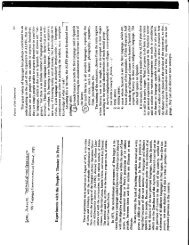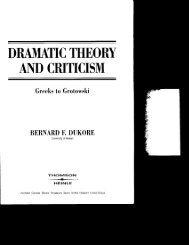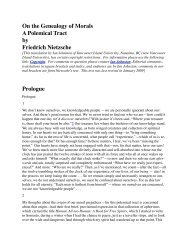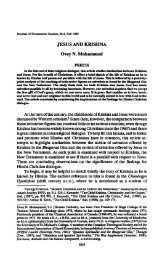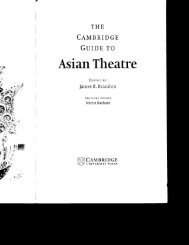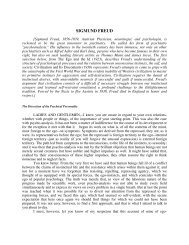Topeng Sidha Karya: A Balinese Mask Dance - Yavanika
Topeng Sidha Karya: A Balinese Mask Dance - Yavanika
Topeng Sidha Karya: A Balinese Mask Dance - Yavanika
- No tags were found...
You also want an ePaper? Increase the reach of your titles
YUMPU automatically turns print PDFs into web optimized ePapers that Google loves.
172 Kodi et al.when referring to the character/mask or the place named after himand be italicized when discussing the story/play. <strong>Sidha</strong> <strong>Karya</strong> is thefinal mask presented in a ritual topeng (mask dance) performance fora <strong>Balinese</strong> ceremony. Every auspicious day, topeng dancers from allover the island engage in multiple performances that conclude withthis story, during which the dancer assumes a priest-like function. Atthe conclusion of the presentation the dancer says Sanskrit prayersand scatters rice and coins to the four directions, ensuring an auspiciouscompletion to the ceremony. Slattem and Schraub (2003:33–34), Emigh (1996: 148–153), Dunn (1983: 71–80), and Bandemand deBoer (1981: 54, 60) have discussed the <strong>Sidha</strong> <strong>Karya</strong> story, notingthe odd blend of demonic and divine within the character. Thisperformance by I Ketut Kodi and other faculty members from theUniversity of Arts in Denpasar, presented after the 2002 Bali bombexploded at Kuta Beach, gives the story in a more developed dramaticform than is usual. The mask always dances, but it is often a solo number,and little about a failed temple ceremony is included. This performancegives insight into both this well-known ritual story and howit was molded this time to respond to current social and political situations.Its humorous approach to its subject will disrupt Western expectationsof exorcism. Humor and clowning are not just secular entertainment.In Bali, the holy and slapstick comingle in improvised formssuch as topeng.The performance is like all previous versions of <strong>Sidha</strong> <strong>Karya</strong> inthat it presents a visitor who is wrongly rejected but then is honoredand embraced. However, each performance is also unique in that itresponds to the particulars of the audience. <strong>Balinese</strong> artists explainthe eternal variation within a set narrative by explaining that a performermust always take into consideration desa (village), kala (time),and patra (situation) in improvising a particular rendition. Thus,though the narrative is set, the performer, in terms of his presentationof the story, will make reference to the specific situation in the placehe is performing and the events of the current time. This introductionwill first give the general background on this important story that isknown and understood by all <strong>Balinese</strong>, and then discuss some of thechanges that the performers made to respond to the particular placeand time.General BackgroundThe story is simple: King Watu Renggong, a sixteenth centurymonarch of the Kingdom of Gegel who presides over the <strong>Balinese</strong>“golden age,” is holding a ceremony at the main <strong>Balinese</strong> shrine,Besakih Temple, to pacify the bhutakala, or demonic forces. A ragged



